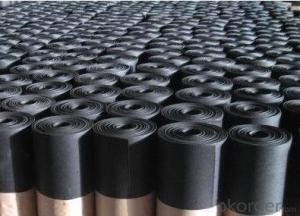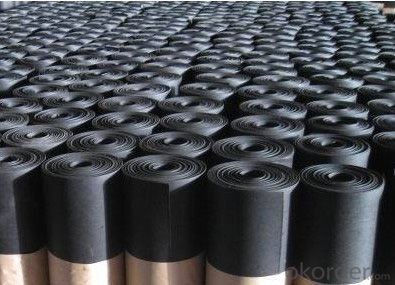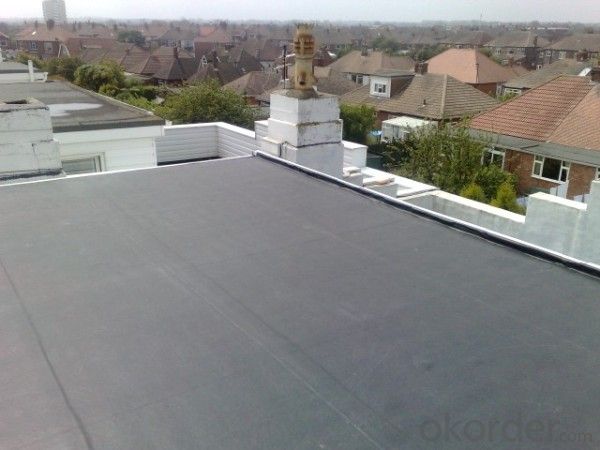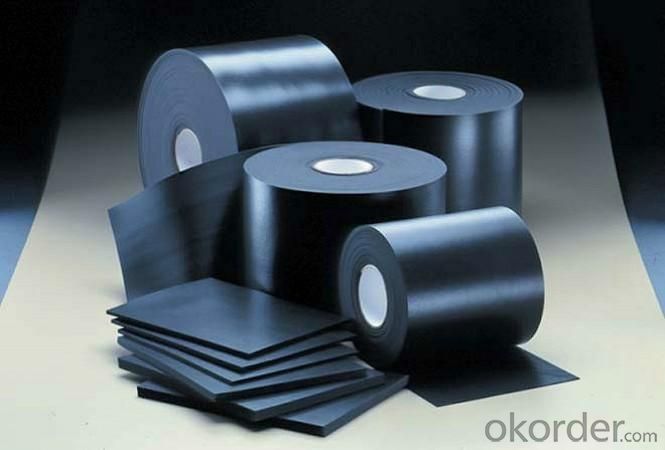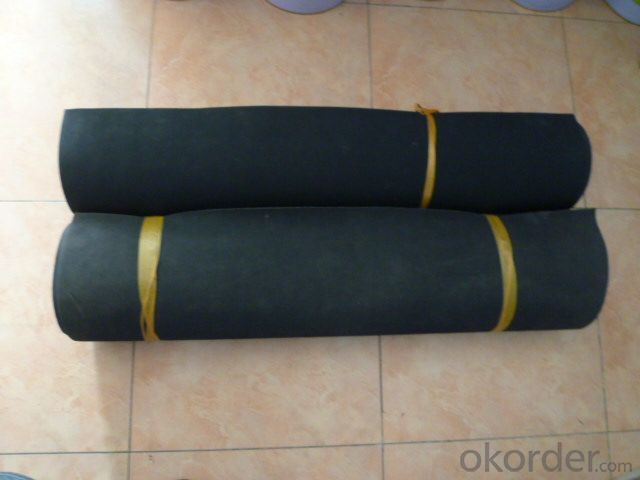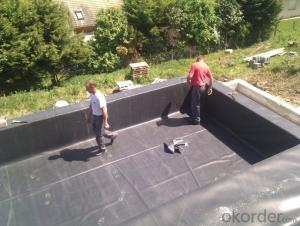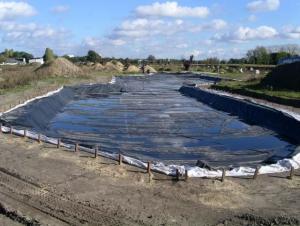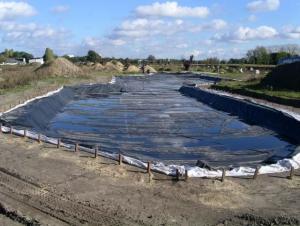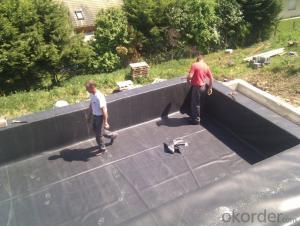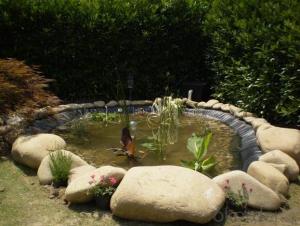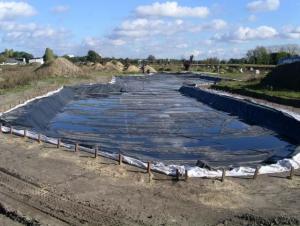EPDM Rubber Coiled Waterproof Membrane for Pond
- Loading Port:
- Shanghai
- Payment Terms:
- TT OR LC
- Min Order Qty:
- 50000 m²
- Supply Capability:
- 5000000 m²/month
OKorder Service Pledge
OKorder Financial Service
You Might Also Like
EPDM Rubber Coiled Waterproof Membrane for Pond
Description Of EPDM Rubber Coiled Waterproof Membrane for Pond:
•EPDM waterproof sheet has excellent anti-ozone-aging performance, able to resist ultraviolet light and corrosion of many chemical corrosive materials in the atmosphere
•It has high tensile strength, high ductility and strong retractility, it has excellent crack resistance, able to effect waterproof function even with tiny vibration of buildings.
• Excellent resistance to ozone, oxidation and sunlight.
• Resistance to chemicals; resistant to most inorganic products.
Main Features of EPDM Rubber Coiled Waterproof Membrane for Pond:
1>Excellent antiaging performance, service life up to 50 years
2>Working well with in 40C to 100C,it canbe constructed with a single layer in ambient temperature.
3>Waterproofing on various kinds of underground project,industrial of civil buildings and structures.
4>high extension rate, high tensile strength, small size changes at heat treatment
5>Good plant roots penetrability resistance and can be made waterproofing layer of planting roof
6>Special modified molecular structure ,effectively resolving the current domestic and foreign glue joint problem.
7>Good low temperature flexibility, and good performance of adapting to ambient temperature changes.
8>Convenient application ,solid joint, no environment pollution
9>chemical corrosion Resistance, can be used for special occasions
10>Convenient maitenance, low cost.
Specifications of EPDM Rubber Coiled Waterproof Membrane for Pond:
| Material | EPDM Rubber |
| Size | 1.2m (width)*20m (length) or customized, weldable type 2.05m or 4m width |
| Thick | 1.2mm, 1.5mm, 2.0mm |
| Type | Vulcanized & Weldable |
| Pattern | Non-reinforced (homogeneous) |
| Certificate | ISO9001/14001 |
Applications of EPDM Rubber Coiled Waterproof Membrane for Pond:
Widely used in roofs, basement, toilet ,swimming pool, and all kinds of industry and civil building waterproofing, reservoir, vivicism, bridge, underground, tunnel and dam waterproofing ,especially to the keystone waterproofing projects which is durability, high corrosion resistance and easy deformation.



IMages of EPDM Rubber Coiled Waterproof Membrane for Pond:




FAQ of EPDM Rubber Coiled Waterproof Membrane for Pond:
1. What are we supplying?
We are specialized in producing Colorful Asphalt Roof Shingle, SBS/APP modified bitumen waterproof membrane, Self adhesive bitumen waterproof membrane, PVC waterproofing membrane, EPDM rubber roofing membrane, Single Component Polyurethane Waterproof Coating, and Spray Polyurea Waterproof Coating
.
2. How Many years experience do we have?
We have been exported to more than 20 countries in the past 15 years.
3. How long do we usually reply your request?
We always reply our customer within 24 hours.
- Q: Are waterproofing membranes resistant to extreme weather conditions?
- Yes, waterproofing membranes are designed to be resistant to extreme weather conditions. These membranes are typically made from durable materials like rubber, PVC, or modified bitumen that can withstand the effects of harsh weather such as heavy rain, snow, strong winds, and extreme temperatures. They are engineered to be flexible, yet strong, ensuring that they can effectively protect structures from water infiltration even in the most challenging weather conditions. Additionally, waterproofing membranes are often treated with UV stabilizers to prevent damage caused by prolonged exposure to the sun's rays. Overall, these membranes provide reliable and long-lasting protection against extreme weather conditions.
- Q: Can a waterproofing membrane be pre-fabricated or pre-made for easy installation?
- Yes, a waterproofing membrane can be pre-fabricated or pre-made for easy installation. In fact, many manufacturers offer pre-made waterproofing membranes that are specifically designed to simplify the installation process. These membranes are typically manufactured in controlled factory conditions, ensuring consistent quality and reducing the potential for errors during installation. Pre-fabricated waterproofing membranes are made from various materials such as bitumen, PVC, EPDM, or TPO, and come in different forms such as sheets or rolls. They are designed to be easily transported and installed on-site. The advantages of using pre-fabricated waterproofing membranes include increased efficiency, reduced labor costs, and improved installation quality. By eliminating the need for on-site fabrication, contractors can save time and resources. Additionally, pre-made membranes often come with detailed installation instructions, making it easier for contractors to ensure proper installation. Furthermore, pre-fabricated waterproofing membranes can be tailored to fit specific project requirements, such as size, shape, or slope. This customization helps to ensure a seamless and effective waterproofing solution. Overall, using pre-fabricated or pre-made waterproofing membranes can significantly simplify the installation process and provide a reliable and durable waterproofing solution for various applications, including roofs, basements, and foundations.
- Q: Can a waterproofing membrane be used in swimming pools or other water features?
- Yes, a waterproofing membrane can be used in swimming pools or other water features to prevent water leakage and maintain a watertight environment.
- Q: Can waterproofing membranes be used on bridge decks?
- Yes, waterproofing membranes can be used on bridge decks. Bridge decks are constantly exposed to harsh weather conditions, including rain, snow, and freeze-thaw cycles, which can lead to the deterioration of the concrete and steel reinforcement. Waterproofing membranes are designed to prevent water infiltration and protect the bridge deck from moisture-related damage. These membranes are typically made of flexible materials such as bitumen, PVC, or EPDM rubber, and they are applied directly onto the bridge deck surface. The waterproofing membrane acts as a barrier, preventing water from seeping into the concrete and causing corrosion of the reinforcement. It also helps to reduce the formation of cracks and extends the service life of the bridge deck. Additionally, waterproofing membranes can be combined with other protective coatings or systems to enhance their effectiveness and durability. Overall, the use of waterproofing membranes on bridge decks is a common and effective method to ensure the long-term integrity and functionality of the structure.
- Q: Can a waterproofing membrane be used for a foundation wall?
- Yes, a waterproofing membrane can be used for a foundation wall. Waterproofing membranes are commonly used to prevent water infiltration and moisture issues in below-grade structures such as basements and foundation walls. These membranes act as a barrier to protect the foundation from water damage, helping to keep the interior of the building dry and preventing structural problems caused by moisture.
- Q: Can a waterproofing membrane be used on precast plaster surfaces?
- Indeed, precast plaster surfaces have a tendency to be porous, enabling them to absorb water. This absorption can ultimately result in water damage and deterioration. Nevertheless, by utilizing a waterproofing membrane, this problem can be mitigated. The application of such a membrane serves to impede water penetration and safeguard the surface against moisture-related predicaments like mold, mildew, and efflorescence. Essentially, the waterproofing membrane functions as a protective barrier, effectively halting water from permeating the plaster and causing harm. It is crucial to ensure that the membrane employed is compatible with the specific type of plaster and is administered accurately in order to attain optimal waterproofing outcomes.
- Q: Can a waterproofing membrane be used in hot climates?
- Yes, a waterproofing membrane can be used in hot climates. The membrane is designed to withstand various weather conditions, including high temperatures, and is effective in preventing water ingress regardless of the climate.
- Q: Can waterproofing membranes be used on concrete stairs?
- Yes, waterproofing membranes can be used on concrete stairs. These membranes are designed to create a protective barrier against water penetration, which is particularly important for areas exposed to moisture such as outdoor or basement stairs. Applying a waterproofing membrane on concrete stairs can help prevent water damage, increase their durability, and extend their lifespan.
- Q: Does a waterproofing membrane prevent water damage to building materials?
- Yes, a waterproofing membrane is designed to create a barrier that prevents water from seeping into building materials, thus effectively preventing water damage.
- Q: Can waterproof sheets be used on steel roof panels?
- Waterproof coils can be used on steel roof panels. Waterproof membrane: waterproofing membrane is mainly used for building walls, roofs, and tunnels, highways, landfills, etc.,
Send your message to us
EPDM Rubber Coiled Waterproof Membrane for Pond
- Loading Port:
- Shanghai
- Payment Terms:
- TT OR LC
- Min Order Qty:
- 50000 m²
- Supply Capability:
- 5000000 m²/month
OKorder Service Pledge
OKorder Financial Service
Similar products
Hot products
Hot Searches
Related keywords
